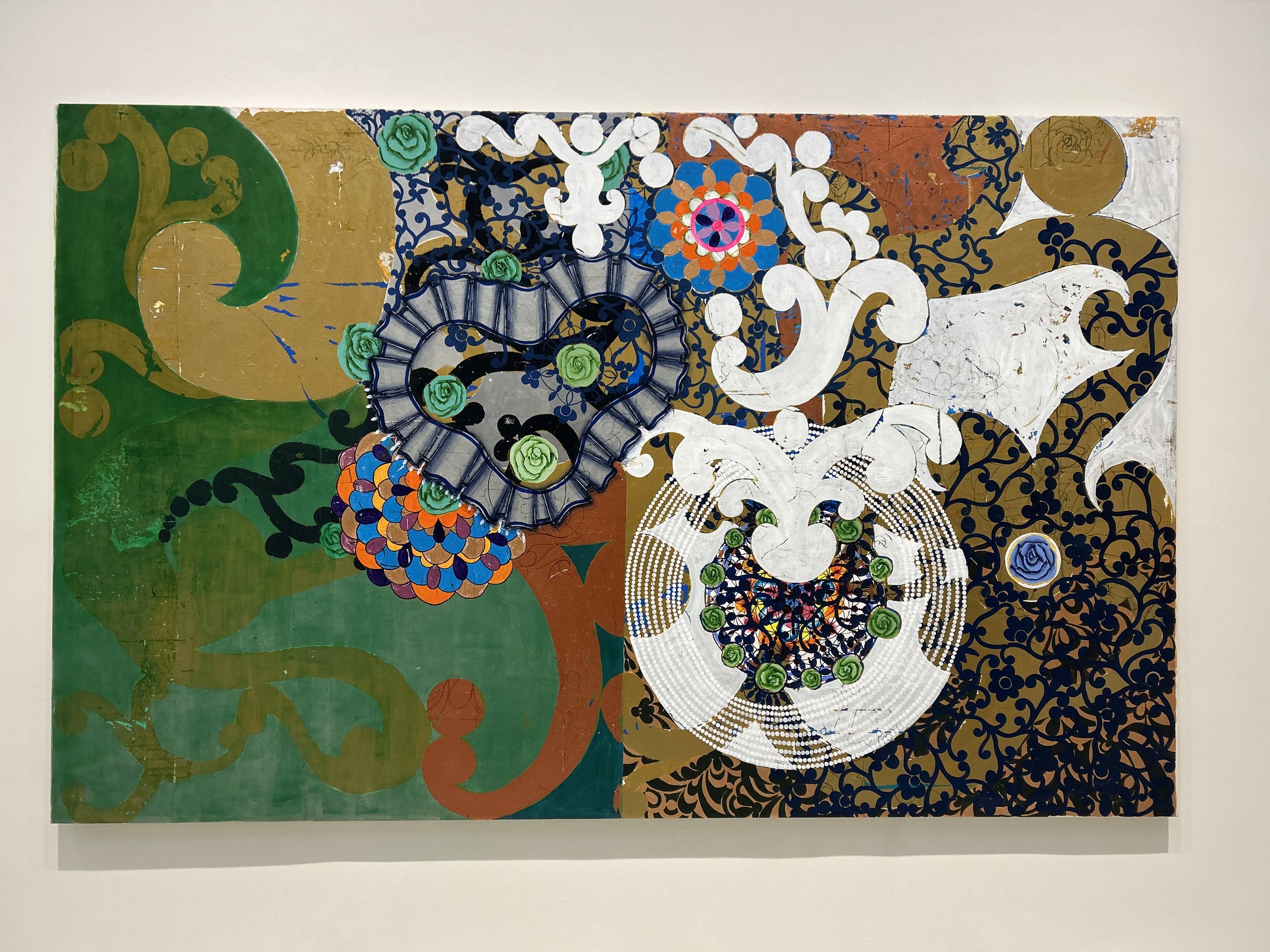In Subverting The Tradition
by Osvaldo Martinez Abreu
In this article, rising art historian and New York City correspondent Osvaldo Martinez Abreu shares an in-depth and insightful perspective with Women in the Arts—offering readers a unique opportunity to experience the vibrant revolution of Beatriz Milhazes, now on view at the Guggenheim.
~Maria Guerrero
Beatriz Milhazes ( b. 1960, Rio de Janeiro, Brazil). As quatro estações. (The Four Seasons) 1997. Acrylic on canvas. Solomon R. Guggenheim Museum, New York, Gift, The Bohen Foundation 2001.222
In whorls of meditative circles and brilliant colors, Beatriz Milhazes ( b. 1960, Rio de Janeiro, Brazil) paints landscapes of social and cultural traditions interlaced with her memories and legacies, at the Solomon R. Guggenheim Museum's current 'Collection in Focus' exhibition, entitled "Beatriz Milhazes: Rigor and Beauty." In geometric abstraction, which highlights the tactility and materialism of her canvas, her unity of brilliant color echoes her primary influences of Henri Matisse, Piet Mondrian, and Tasila do Amaral. In doing so, Milhazes congeals a consolidation of past and present. Milhazes demonstrates the ideals that etched Western European art history into memory, but in its form and practice, the artist in the same moment layers and etches new possibilities in the tradition.









In her rhythmic expressions of culture, Milhazes leads through history and memory. Her intricate lace-like geometric forms have centered her work across almost four decades of sculpting, collaging, printing, and painting, among others. While infusing the traditional colonial and architectural influences of her Brazilian roots, Milhazes envelopes them with movements such as Tropicália, the 1960s movement celebrating Brazilian identity while opposing military presences. Through their vibrancy of color and shape, Milhazes’ work celebrates her Brazilian lineage, while creating a lexicon of shapes and forms that gives presence to a context of past, present, and future.





Her artistic technique, of collaging paint in a cyclic pattern, collapses the visible imprints of the artist. This sequential practice opens her monumental canvases to be observed from afar. The ideals of memory and spirituality that are imbued become far greater than herself. We the viewers, are invited to step back and ponder our memories and traditions in her folkloric patterns and abstractions. However, Milhazes' technique also encourages a micro observation, as her collaged style of work invites us to dilute the minute details that form the arabesque and floral patterns. Contemporary artists, such as Firelei Báez, foster this micro and macro observation. Art becomes mirrors of our memories and past, but also emblems of reflections of the greater world around us.




In a liberated expressionism, Milhazes molds against the restricting nature of practice and art history, that has been centered on Western-Eurocentric ideals. Against conformity, Milhazes illustrates the physical by depicting markers of the architectural and natural world she has inherited, but also the ideas of remembrance through memory and past and the spiritual world. This forges a transformative perspective in the meditative circles and geometric shapes that make up her canvases. These themes are not stagnant but ones that are engrossed in a plurality that interconnects borders and boundaries of what memory and remembering can be depicted as, as well as how art history can be a tool. It is not one cemented, but one whose malleability garners differing perspectives to illuminate what future art will be.
Published April 15, 2025 | Women in the Arts, Inc. | Images by Osvaldo Martinez Abreu



